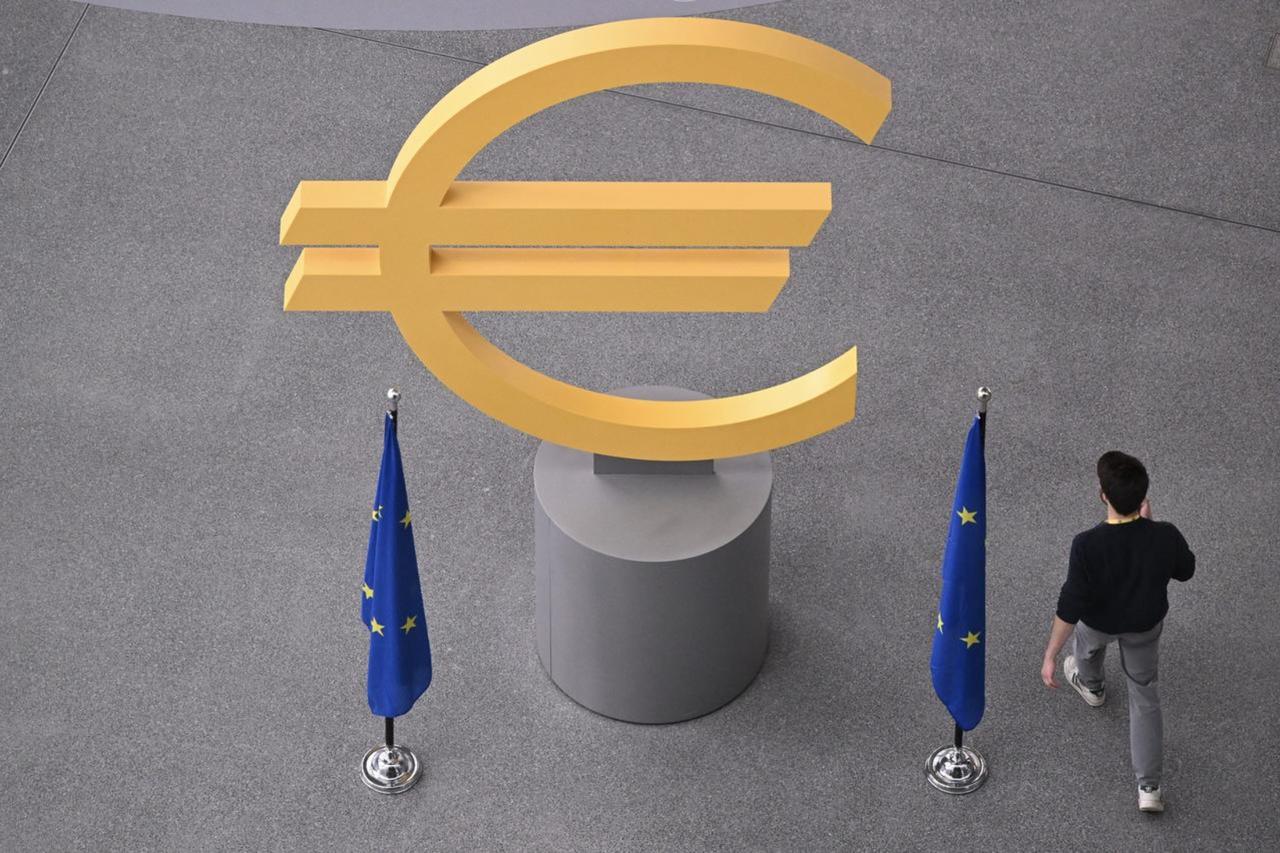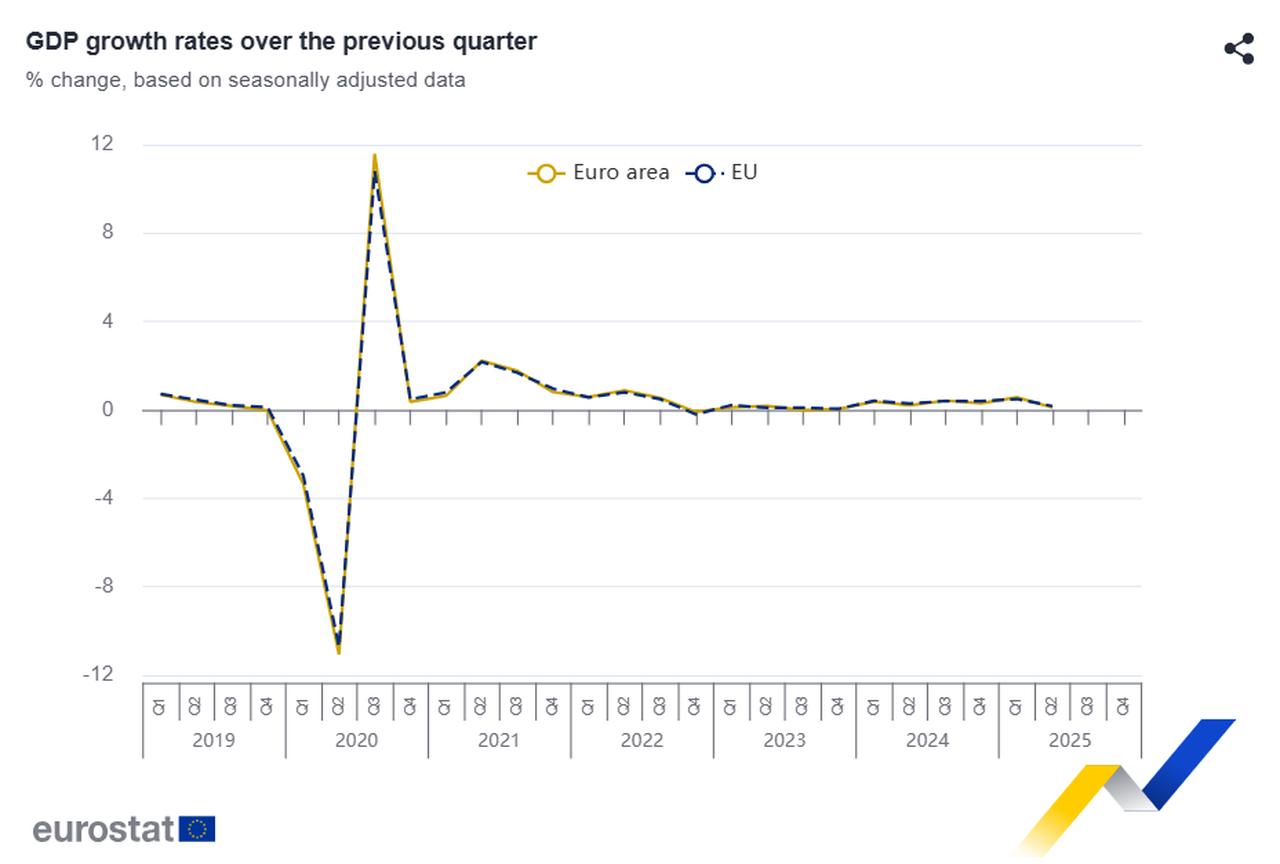
The eurozone economy grew by 0.1% in the second quarter of 2025, slowing from 0.5% growth in the first quarter, Eurostat announced on Wednesday.
The figure exceeded earlier expectations of stagnation, driven by stronger-than-expected economic performance in France and Spain, which helped offset a contraction in Germany, the bloc’s largest economy.
The broader European Union, encompassing 27 countries, posted slightly higher growth of 0.2% in the April-June period.

Among the eurozone’s largest economies, France and Spain outperformed expectations. France, the region’s second-largest economy, expanded by 0.3%, while Spain recorded a robust 0.7% increase in output.
In contrast, Germany—the eurozone’s largest economy—contracted by 0.1% in the second quarter. Italy also reported a 0.1% decline in gross domestic product (GDP).
These divergences reflect uneven resilience among member states as the region grapples with economic headwinds, particularly from international trade frictions.
The modest economic performance came despite heightened trade tensions between the European Union and the United States following the re-election of U.S. President Donald Trump in January.
Washington imposed a series of tariffs on EU exports earlier in the year, threatening to escalate to 30% across most goods by Aug. 1. However, the two sides reached a provisional agreement on Sunday, capping tariffs at 15% for a majority of European products.
While the deal averted a full-blown trade conflict, economists note that the 15% universal tariff is still expected to weigh on growth. According to Capital Economics, the new tariff regime could subtract approximately 0.2 percentage points from eurozone GDP in the second half of the year.
The agreement covers sectors including pharmaceuticals and semiconductors, though final exemptions are still being negotiated.